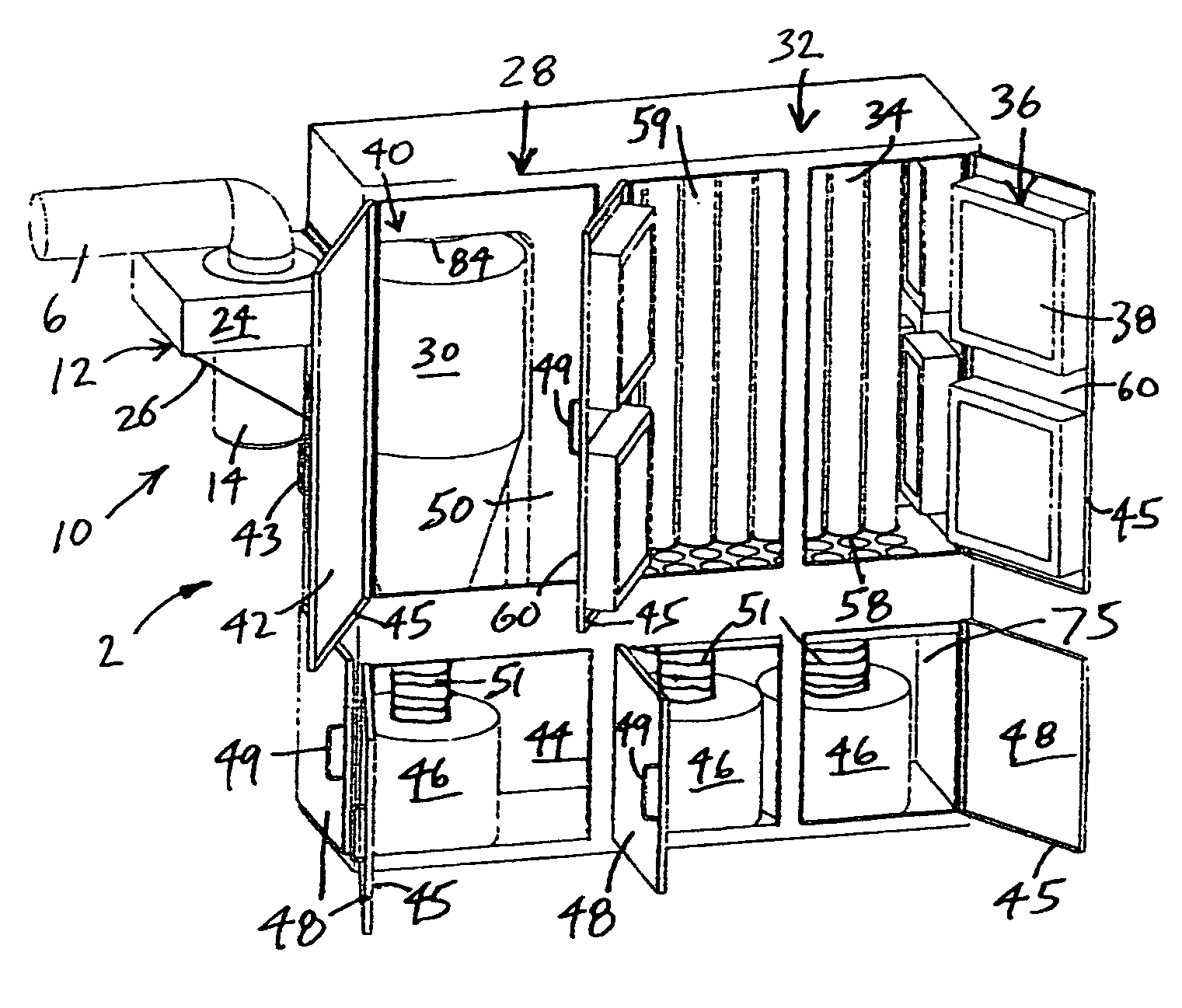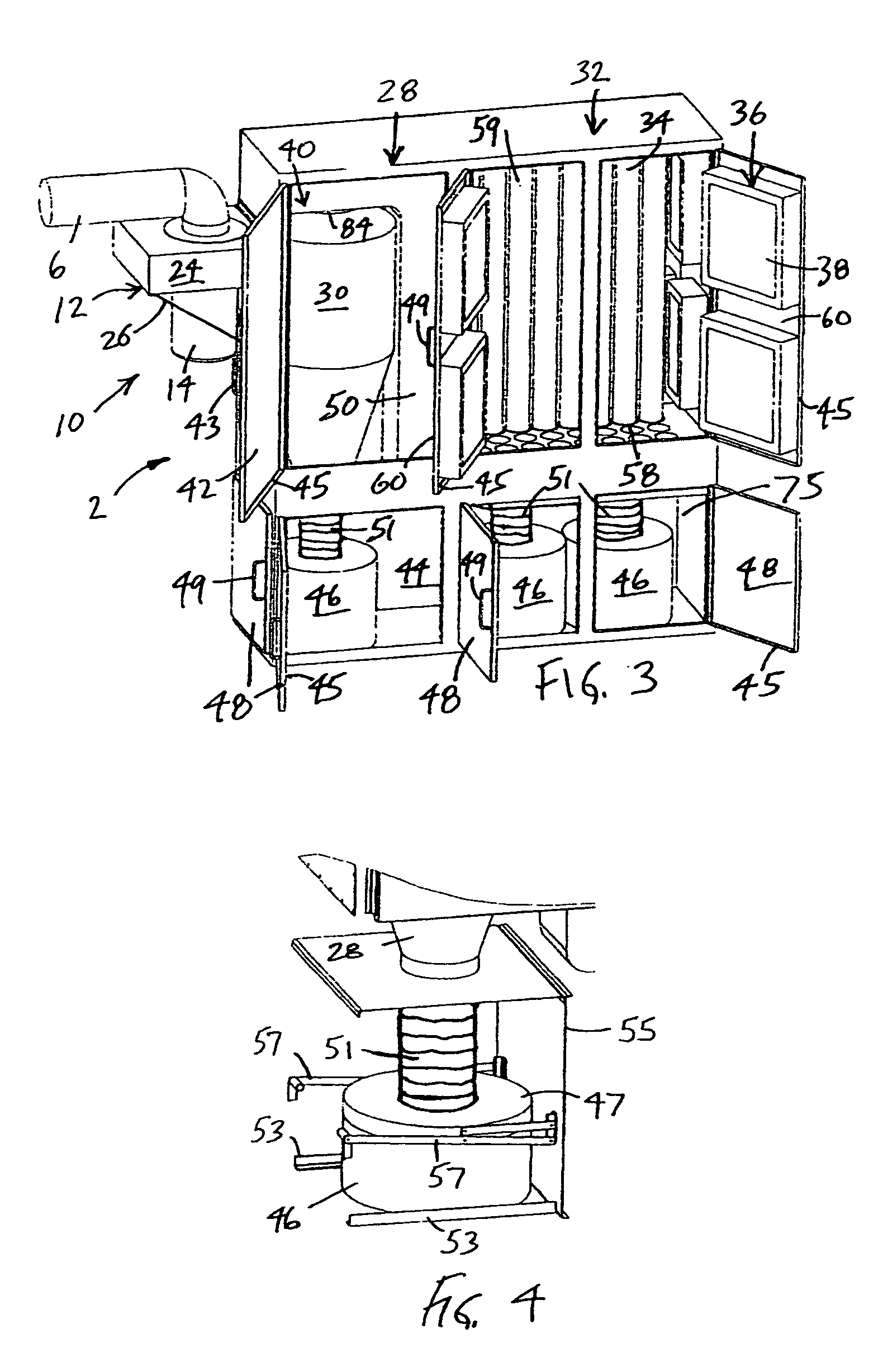Airborne particle removal system
- Summary
- Abstract
- Description
- Claims
- Application Information
AI Technical Summary
Benefits of technology
Problems solved by technology
Method used
Image
Examples
Embodiment Construction
[0023] Airborne particle removal systems in accordance with the present invention can provide a cleaning system for removing dust and particles from various types of industrial equipment, and provide a means for decontamination in the event that biologically hazardous materials are present in the collected material. The term “particles” is meant to include not only inanimate matter such as metal ions, insecticides, herbicides, toxic chemical elements and compounds, radioactive contaminants, and the like, but also spores, microbes, viruses, and other hazardous biological material.
[0024] Particular embodiments of the airborne particle removal system are particularly adaptable to equipment having a variety of different processing stations through which product or material is manufactured and / or transported, usually by a conveyer system or equivalent. The airborne particle removal system will preferably be operational at the same time that product or material is processed or directed t...
PUM
| Property | Measurement | Unit |
|---|---|---|
| Length | aaaaa | aaaaa |
| Length | aaaaa | aaaaa |
| Flow rate | aaaaa | aaaaa |
Abstract
Description
Claims
Application Information
 Login to View More
Login to View More - R&D
- Intellectual Property
- Life Sciences
- Materials
- Tech Scout
- Unparalleled Data Quality
- Higher Quality Content
- 60% Fewer Hallucinations
Browse by: Latest US Patents, China's latest patents, Technical Efficacy Thesaurus, Application Domain, Technology Topic, Popular Technical Reports.
© 2025 PatSnap. All rights reserved.Legal|Privacy policy|Modern Slavery Act Transparency Statement|Sitemap|About US| Contact US: help@patsnap.com



